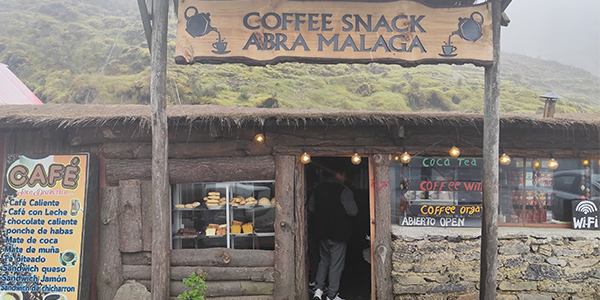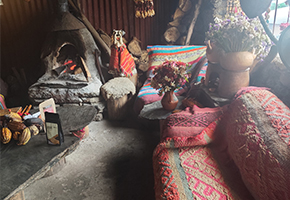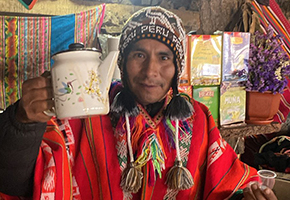Why Altitude Matters on the Salkantay Trek
The Salkantay Trek altitude and acclimatization are two of the most important aspects to consider before starting this adventure. The trek reaches elevations over 4,600 meters (15,000 feet), where the air is thinner, and oxygen levels are significantly lower. Without proper acclimatization, hikers risk experiencing altitude sickness, which can affect performance and safety.
Key Altitudes Along the Salkantay Trek
The trek covers diverse terrain, from high mountain passes to lush cloud forests. Below are the approximate altitudes of the main sections:
Cusco: 3,400 m (11,150 ft) – Starting point, ideal for acclimatization.
Soraypampa (camp): 3,900 m (12,795 ft).
Humantay Lake: 4,200 m (13,780 ft).
Salkantay Pass (highest point): 4,650 m (15,255 ft).
Chaullay: 2,900 m (9,514 ft).
Santa Teresa: 1,550 m (5,085 ft).
Aguas Calientes: 2,040 m (6,690 ft).
Machu Picchu: 2,430 m (7,972 ft).
This variation makes the trek challenging but also rewarding, as hikers experience both high-altitude landscapes and subtropical climates.
Acclimatization Tips Before the Trek
To enjoy the trek and avoid altitude sickness, proper preparation is essential. Here are some recommendations:
Arrive in Cusco 2–3 days before the trek to allow your body to adjust.
Stay hydrated, drinking at least 2–3 liters of water daily.
Avoid alcohol and heavy meals before hiking days.
Drink coca tea or chew coca leaves, a traditional Andean remedy.
Climb gradually, allowing your body to adapt to higher elevations.
Symptoms of Altitude Sickness
Altitude sickness can occur when your body does not adapt quickly to reduced oxygen. Common symptoms include:
Headache
Nausea or vomiting
Dizziness
Fatigue
Shortness of breath
Most cases are mild and improve with rest, hydration, or medication. Severe cases are rare but require immediate descent and medical attention.
How Acclimatization Improves the Experience
When travelers follow acclimatization guidelines, they increase their chances of completing the trek comfortably. Hikers who adapt properly:
Have more energy for long days of walking.
Enjoy breathtaking views at the Salkantay Pass without health concerns.
Reduce risks of delays due to illness.
Fully experience the trek from high mountains to the lush jungle near Machu Picchu.
What you should do before booking Salkantay Trek to Machu Picchu
1. What is the Salkantay Trek, and how does it compare to the Inca Trail?
The Salkantay Trek is an alternative route to Machu Picchu, offering breathtaking landscapes, including snow-capped mountains, cloud forests, and high-altitude passes. Unlike the Inca Trail, the Salkantay Trek does not require a permit and is less crowded, providing a more adventurous experience.
2. How many days does the Salkantay Trek take to reach Machu Picchu?
The standard Salkantay Trek takes 5 days and 4 nights, covering approximately 72 km (45 miles). However, there are shorter and longer variations of the trek available.
3. What is the difficulty level of the Salkantay Trek?
The Salkantay Trek is considered moderate to challenging, as it involves hiking at high altitudes and steep ascents. The highest point is the Salkantay Pass at 4,650 m (15,255 ft). Proper acclimatization is recommended before starting the trek.
4. Do I need a permit to hike the Salkantay Trek?
No, unlike the Inca Trail, the Salkantay Trek does not require a special permit. However, you do need an entrance ticket for Machu Picchu, which should be booked in advance.
5. What is the best time of year to hike the Salkantay Trek?
The best time to hike the Salkantay Trek is during the dry season (April to October). The weather is more stable, with clear skies and less rain. The rainy season (November to March) can make the trail muddy and challenging.
6. What should I pack for the Salkantay Trek?
Essential items include:
- Hiking boots (waterproof and comfortable)
- Warm layers (temperatures drop at night)
- Rain jacket or poncho
- Sleeping bag (suitable for cold weather)
- Sun protection (hat, sunglasses, sunscreen)
- Water bottle and purification tablets
- Basic first aid kit
7. Is altitude sickness a concern on the Salkantay Trek?
Yes, altitude sickness can be an issue, especially at the Salkantay Pass (4,650 m). It is recommended to spend a few days in Cusco (3,400 m) before the trek to acclimatize. Staying hydrated, avoiding alcohol, and chewing coca leaves can help with symptoms.
8. How do I get to Machu Picchu from the end of the Salkantay Trek?
After reaching Hidroelectrica, you have two options:
- Hike 3 hours to Aguas Calientes.
- Take a 30-minute train from Hidroelectrica to Aguas Calientes.
From Aguas Calientes, you can hike or take a bus up to Machu Picchu.
9. Are there accommodation options along the Salkantay Trek?
Yes, most trekking companies provide campsites or eco-lodges along the route. Some upgraded tours offer more comfortable accommodations, such as glass cabins or domes. The final night is usually spent in a hotel in Aguas Calientes.
10. Can I visit Machu Picchu without hiking the Salkantay Trek?
Yes, you can take a train from Cusco to Aguas Calientes, followed by a short bus ride or hike up to Machu Picchu. This is the most popular option for visitors who prefer not to hike.
You must be interested
- Salkantay Trek to Machu Picchu
- Salkantay Trail 5 days 4 nights
- Salkantay Trek difficulty level
- Salkantay vs Inca Trail comparison
- Best time to hike Salkantay Peru
- Salkantay Trek tour price 2026
- Guided Salkantay Trek packages
- Salkantay Trek altitude and acclimatization
- Salkantay Trekking tours from Cusco
- Salkantay Trek full itinerary
Salkantay Travel Information
- Salkantay Trek Food: What You’ll Eat on the Trail
- Birds of the Salkantay Trek: Species You Can Spot on the Route
- Is the Salkantay Trek Dangerous?
- Salkantay Trek Altitude: Heights Along the Route
- Flora and Fauna in Salkantay Trek
- Altitude Sickness on the Salkantay Trek
- Salkantay Trek Difficulty: How Hard Is the Route?
- Salkantay Trek FAQs: Answers to Common Questions
- Best Time to do Salkantay trek
- Training for Salkantay Trek: How to Get Ready
- How long is the Salkantay Trek?
- Salkantay Trek Price: How Much Does It Cost?
- What Is the Salkantay Trek?
- What to Bring on the Salkantay Trek?
- Best Time to Do Salkantay Trek
- Your Insider’s Guide to Salkantay Trek
- Where is Salkantay?
- Salkantay highlights
- Tour Montaña de Colores con Transporte








